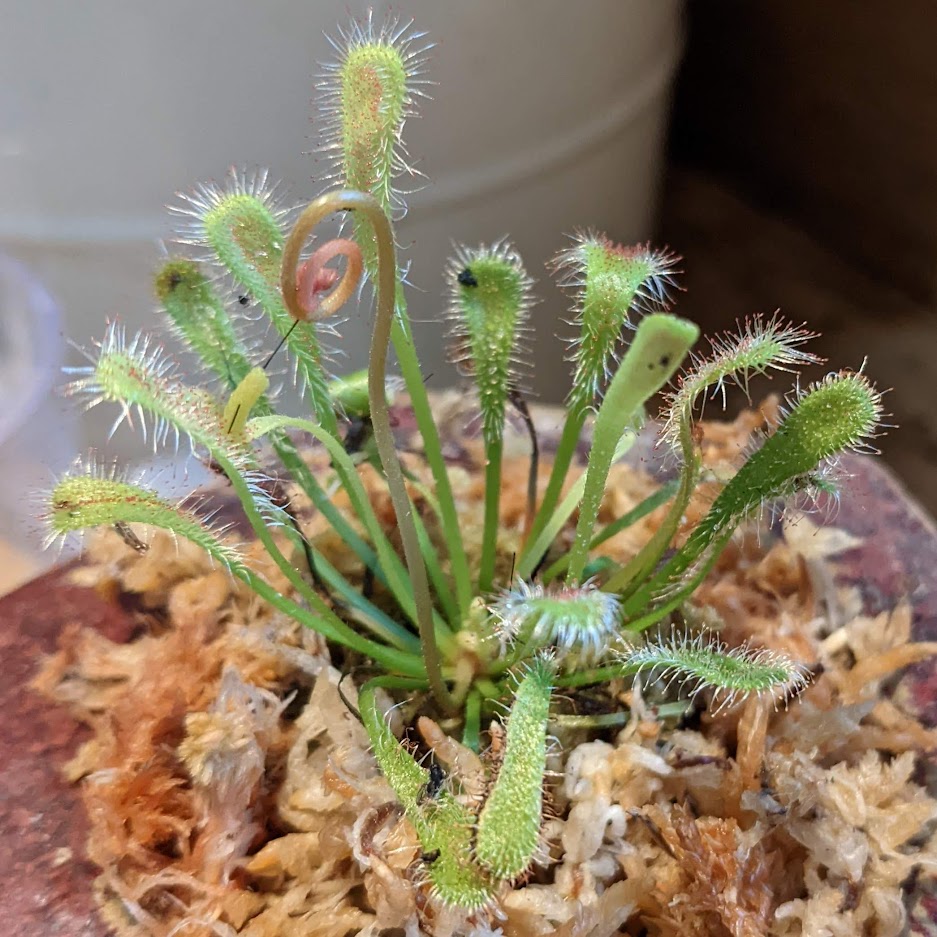Feed Me, Seymour

The care of carnivorous plants
By Molly Weeks Crumbley
“You can’t name it Seymour, Mama. That’s too creepy.”
My 9-year-old son and I were crouched over a cardboard box in the kitchen, debating names for our new family member.
What was in the box? Not a cute furry pet, that’s for sure. “Well, can I call it Audrey?” I asked as I sifted through the moss.
“No, that’s worse!” he cried.
Finally, I found my quarry, gently freeing a small plant from its packing material. Yes, a plant. Our new houseguest, in fact, is a sundew. It looks innocent enough, but it happens to be carnivorous. And, according to my son, creepy.
As he watched me pot our little sundew, we continued to debate names. I decided that we obviously had to pay homage to one of our family’s favorite movies, Little Shop of Horrors, but my child was concerned that we would be condemning ourselves to death by plant if we were too on the nose.
“Alan Menken,” I finally decided. “He wrote the music.”
He consented, and we welcomed Alan Menken into our homes and our morbidly curious minds.
So why a carnivorous plant? I had dabbled with the idea for a few years in hopes of finding a way to finally outwit the fruit flies and ants that find their way into my kitchen every spring, but it was a podcast that finally encouraged me to go for it. I have recently become fond of Ologies, a podcast in which host Alie Ward interviews different scientists for a deep dive into their field. Her episode on carnivorous phytobiology (meat eating plants) taught me about some of the different species and also reassured me that I really wouldn’t end up getting devoured by a houseplant.
I ordered my bird nest sundew from an online shop, but I have since found that I can add some different carnivorous species to my collection by visiting a local shop in Calvert County. Hills Bayside Plant Boutique (hillsbayside.com) has several meat eaters like hanging pitchers and Venus fly traps in their inventory. The shop owner Phyllis Hills, who specializes in growing rare and unusual houseplants, told me that it’s important for first-time owners like myself to be aware of the needs of my plant. Even though they absorb nutrients from the insects they catch, they still have other nutritional requirements as well.
“They require more water than other houseplants,” she said. “Two to three times a week. I also mist them several times.” Not just any water will do, either. Carnivorous plants should only receive distilled or rain water.
The day that Alan Menken came in the mail, it just so happened to be a rainy day. Perfect! My son gamely headed into the muddy yard with a container in which to collect rain. Now potted, treated to fresh cold rain, and wrapped in sphagnum moss, Alan Menken was ready to chow down. My son and I got a little too excited when we caught and tried to drop an errant ant onto one of the sticky plant leaves; our aim wasn’t very good and it soon got lost in the tangle of moss. By the end of our first week together, though, Alan Menken showed us that he was perfectly fine catching his own grub. Literally. As of today, he has the remnants of at least 9 different insects adhered to his sappy tendrils.
Fruit flies, beware!
